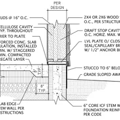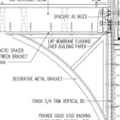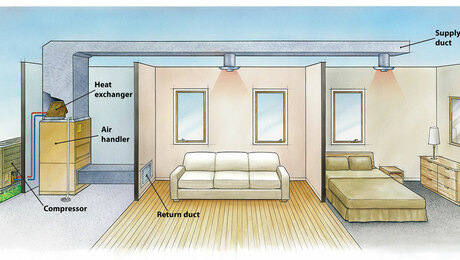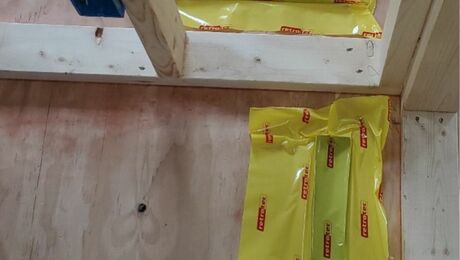Effects of a high Merv filter
Has anyone had any experience installing a Lennox Pure Air/Healthy Climate filter box with a Merv 16 filter?
I have a high efficiency Lennox furnace with an ECM motor. I have read the article by Alison Bailes of Energy Vanguard regarding high Merv filters so I have some understanding of the effect they can have but am wondering about any personal experience. Is there any detrimental effect on the motor?
I am interested in hearing all opinions…
Thanks,
Aaron
GBA Detail Library
A collection of one thousand construction details organized by climate and house part









Replies
I monitor my filters with a manometer. I use a $50 old school Dwyer Mark 3 and it works great. You can watch the pressure drop increase as the filter loads up. You would be surprised how long some filters can go before there is significant restriction. Saves me a ton in unnecessary expensive filters replacements.
I only have a 1 inch filter but I tested every box store filter in my size. I was surprised to find the Filtrete 1900 Merv 13 actually had the lowest pressure drop. The cheaper merv filters actually had way more pressure drop.
I have a few questions regarding the use of your manometer.
1. What pressure drop do you get with a new Filtrete 1900?
2. At what measurement do you change your filter?
3. Do you just insert the plastic tubing into a hole on each side of the filter?
4. Do you have a metal tip on the end of the tubing? I have seen a Mark II and it just comes with plastic tubing.
Thanks,
Aaron
The two big issues as you go up in MERV rating:
1- More flow restriction, which means more back pressure for the blower to deal with and correspondingly less air flow through the system
2- The finer filters fill up quicker, which makes #1 even more of an issue
The easiest solution is to step up from a 1" filter to a 3" or 4" thick pleated filter, which has a LOT more surface area which helps to counteract the #1 problem I mentioned above. I use the large pleated filter system made by Aprilaire which works well, but needs to use their special housing. If you just step up to a thicker paper-cased pleated filter, you can sometimes modify your existing filter slot a little to use the thicker filters. Either option accomplishes basically the same thing.
BTW, if you use a manometer as BFW577 mentions, and you check immediately after installing a new filter, you can get a baseline pressure reading that you can then track. If you keep track of this for a little while, you can use the manometer readings to tell you when you need to replace your filter instead of just doing the replacements on a schedule. This can save you some money after a while if you find you're able to safely stretch out the time between filter changes. I recommend this method to my customers all the time since it usually saves a lot of money (my customers are datacenter operators with sometimes hundreds of 2 foot square pleated filters in their air handling systems).
Bill
Thank you.
Thanks. I will look for one.